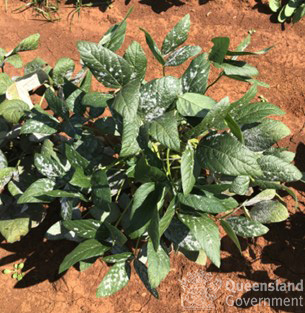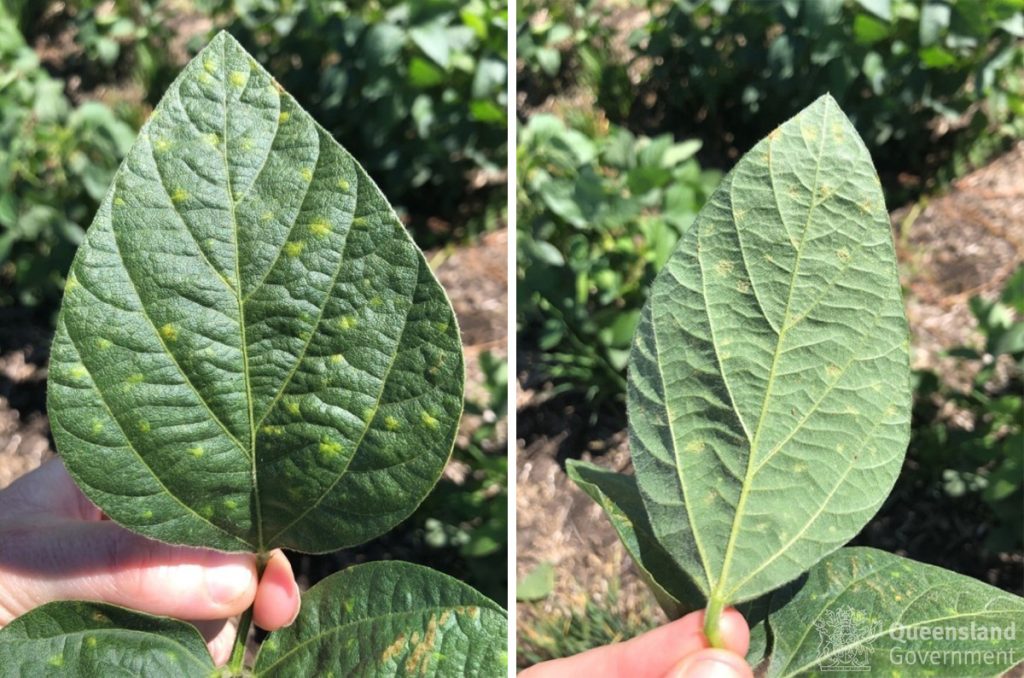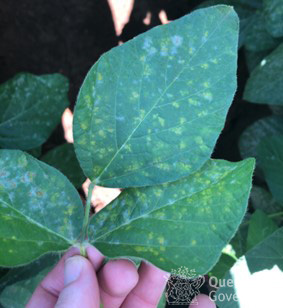The DAF plant pathology team has recently identified powdery mildew and downy mildew from soybean crops growing in the Mackay region.
Powdery mildew in soybean is caused by the fungus Erysiphe diffusa. This air-borne pathogen thrives in cool, humid weather. Infected plants develop symptoms initially on older leaves in the lower canopy. Whitish grey powdery patches develop on the upper and lower leaf surfaces. Under conducive conditions, symptoms can quickly spread up the plant to cover entire leaves, stems and pods.
If the disease infects plants prior to flowering, fungicide applications may be warranted to manage this disease. Tebuconazole is currently registered to manage powdery mildew in soybean. Consult the APVMA website (https://apvma.gov.au/) for the latest information on registered chemicals.

A whitish grey fungal growth develops on soybean leaves infected with powdery mildew. Photo: Lisa Kelly
Soybean downy mildew is caused by Peronospora manshurica. The pathogen infects crops during periods of rainy, humid weather. Though often widespread, the disease is thought to have a minimal impact on yields. Infected plants have small light green to yellow spots on the upper leaf surface. A whitish grey or tan coloured fungal growth develops from the spots on the lower leaf surface during wet and humid conditions. The pathogen can survive between soybean crops in infected seeds, on volunteer soybeans or alternative hosts, and in soil and stubble.

Leaves infected with downy mildew have pale green or yellow spots on the upper surface and a whitish grey fungal growth on the lower surface. Photo: Lisa Kelly
Under some circumstances, both diseases can occur together on the same plant. Younger leaves tend to be more susceptible to downy mildew, whilst older leaves tend to show symptoms of powdery mildew first. Powdery mildew will spread fungal growth across the entire leaf surface, while downy mildew fungal growth tends to occur in spots or small patches on the underside of leaves, with the yellowing visible from the upper surface.

Leaves infected with both powdery mildew and downy mildew. Photo: Lisa Kelly
For more information on these diseases, consult the Mildews Fact Sheet at the Australian Oilseeds website.
If you see disease symptoms in grain crops, please contact plant pathologist Lisa Kelly ([email protected], 0477 747 040) for further information on disease diagnosis.
